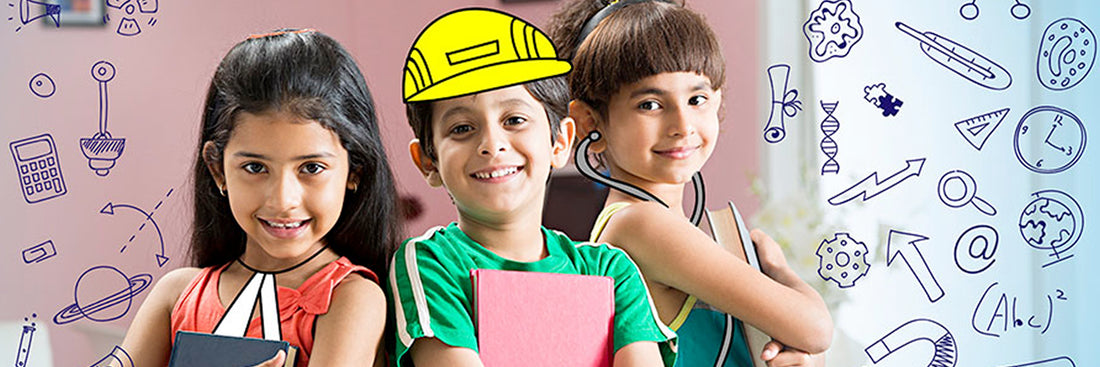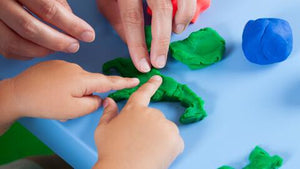
Child’s Brain Development: 3 to 5 years
If you feel like every time you turn around, your child has learnt something new, you’re not mistaken. The preschool time is a period of rapid brain development in children which is fed by two simultaneous processes: synaptogenesis and myelination. Synaptogenesis is a phenomenon that that links neurons together into sophisticated networks through creation of new synapses in the brain. Myelination on the other hand sheathes the nerves in a fatty, protective coating that enables faster transmission of signals to the brain. The resulting elaborate and increasingly efficient neural network allows for speedy communication between various regions of the brain, leaving your child poised to learn anything and everything ranging from a new word to a new song to a new concept on how the universe works. Following are some of the ways you may see brain development displayed in your child:
Cognitive Development
A child’s brain grows in a preprogrammed, bottom-to-top sequence from the brainstem, which controls the most basic bodily functions, to the cortex which governs the most complex thinking. Experts say that there are critical periods in the brain development cycle during which children are a little sensitive to the environment for learning, which includes everything from proper stimulation to optimum nutrition. From there on, cognitive advancements depend on stimulations of neurons and their connections that strengthen them and broaden their functionality.
While most children are unable to read by the age of 5, they start to recognize letters and associate them with sounds between 3 and 5 years of age. When you show your child the ABCs saying the letters aloud, it requires them to use at least three different areas of their cortex to successfully process that information. To be more specific, the visual cortex sorts out the symbols that the child is seeing, the angular gyrus associates those symbols with the sounds of the letters and the Wernicke’s area is where the connection to this understanding is established.
Motor Skills
As your kid’s agility grows like running, jumping, climbing and learning to perform even more complicated feats, their brain continues to hone processes that are key balance and coordination. Children also develop executive functions during preschool years which control memory, timing, and sequencing – the abilities that are essential for complex physical activities like riding a bike and throwing and catching a ball. The key to advancements is repetition, so that neural connections are strengthened with the use of both small and large muscle movements. You will be able to observe the progress when your child starts performing activities like walking backwards, skipping, hopping on one foot etc.
Moreover, at this age, fine motor skills also become important, as your child learns to draw, write, build and create using different ways that require their hands to coordinate precisely with their brain
Communication Skills
Have you ever wondered why its so difficult to distinguish and understand sounds and syllables that are not a part of your native language. Even for your toddler, their brain first forms the synaptic connection which is necessary to hear and produce sounds used by all the languages around the world. With repeated use, these connections become strengthened or are pruned away to favor the sounds that the child hears and uses in their native language.
As time passes by, you will observe a change in your child’s ability to distinguish between the languages spoken around them and the ones that are unfamiliar. An infant would react to all spoken languages but by the time they reach preschool, they are engaged when they start to understand what’s being spoken around them and may ignore or get confused by the foreign languages.
Your toddler’s communication skills take a quantum leap during the preschool years. They become better listeners and respond more readily when they are spoken to. Not just with their sentences getting longer and more complex, they also start following directions with more than one steps. For example, they can describe a series of events in sequence and even begin to think out loud through situations.
Social Skills
The key to understand your preschooler’s socialization is the ‘use it or lose it’ rule of brain development. Studies show significant differences between children who have experienced frequent interactions with their parents and other caregivers as opposed to children with less stimulation. Till the age of 3, the child’s brain produces an excess of synaptic connections – many more than they need. Social interactions reinforce the synaptic connections that are involved with language and other form of communication or social expressions, while the connections not in use become weak and gradually disappear. In this way, your child’s social environment literally shaped their brain, a process also known as plasticity.
You might observe similar changes in other areas of social interaction as your child begins to establish relationships with their peers. Between ages 3 and 5, with the help of development of cerebral cortex, your child starts believing that there can be multiple points of view to see the world. In fact, by the age of 4, children become well aware of what they want to play with, which may be in direct conflict with what another child wants. Most of this learning, and understanding takes place through gameplay, which according to experts is a complex series of skills and take time to develop. A s your child starts to play with other kids, they begin to learn the trial and error method to cooperate and negotiate with other children through sharing and taking turns.






